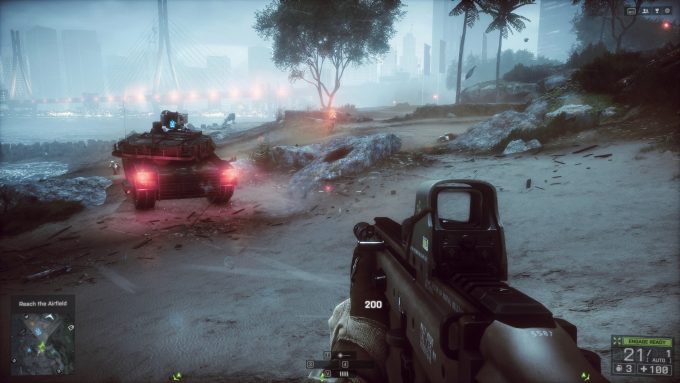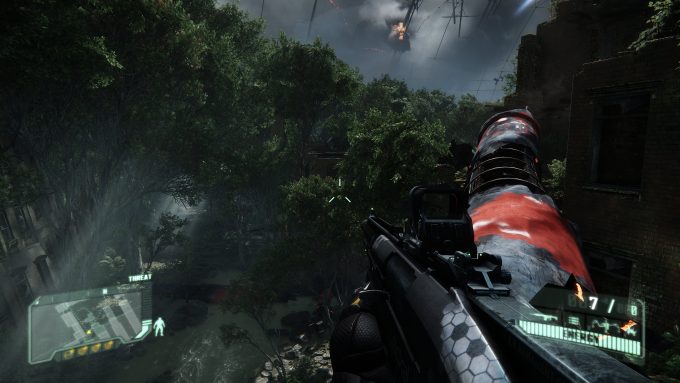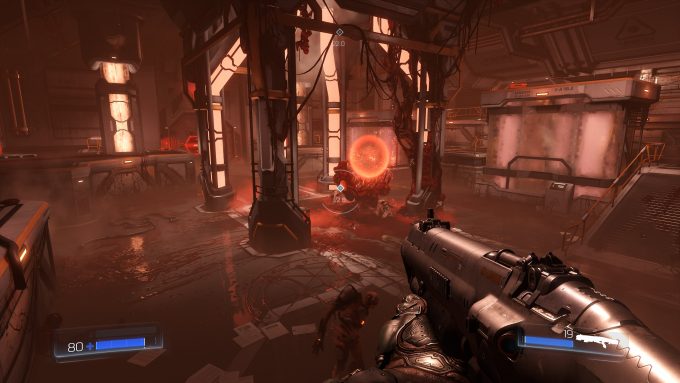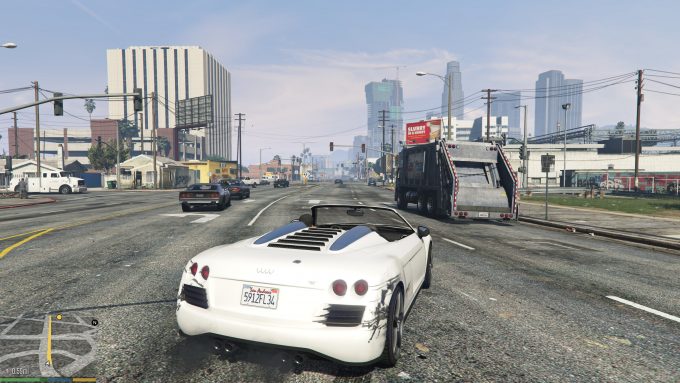- Qualcomm Launches Snapdragon 4 Gen 2 Mobile Platform
- AMD Launches Ryzen PRO 7000 Series Mobile & Desktop Platform
- Intel Launches Sleek Single-Slot Arc Pro A60 Workstation Graphics Card
- NVIDIA Announces Latest Ada Lovelace Additions: GeForce RTX 4060 Ti & RTX 4060
- Maxon Redshift With AMD Radeon GPU Rendering Support Now Available
NVIDIA GeForce GTX 1080 Ti Review: A Look At 4K & Ultrawide Gaming

If you want to dial your gaming to 11, the ideal GPU has just landed: GeForce GTX 1080 Ti. This card might sport an odd-sized 11GB framebuffer, and memory bandwidth of 11Gbps, but what ultimately matters is that it becomes the most suitable 4K gaming card to date (and not to mention, an amazing ultrawide card.)
Page 2 – Games: Battlefield 4, Crysis 3, DOOM & Grand Theft Auto V
Battlefield 4
Thanks to the fact that DICE cares more about PC gaming than most developers, the Battlefield series continues to give us titles that are well-worth benchmarking. While Battlefield 4 is growing a little long in the tooth, it’s still a great test at high resolutions. As Battlefield 1 is now out, it’ll be replacing this iteration very shortly.
Testing: The game’s Singapore level is chosen for testing, as it provides a lot of action that can greatly affect the framerate. The saved game we use starts us off on an airboat that we must steer towards shore, at which point a huge firefight commences. After the accompanying tank gets past a hump in the middle of the beach, the test is stopped.
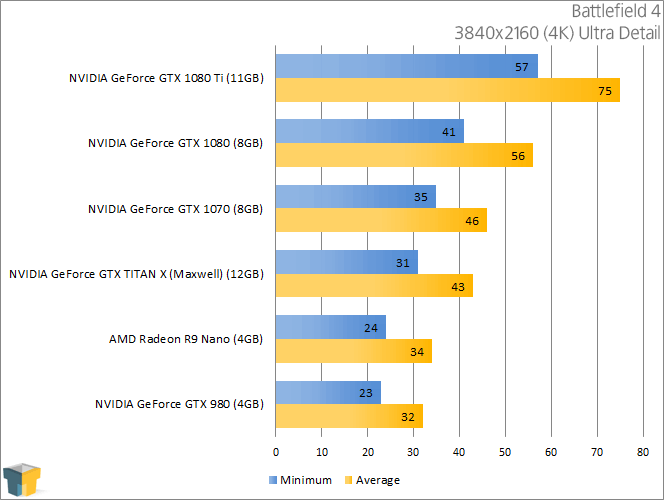
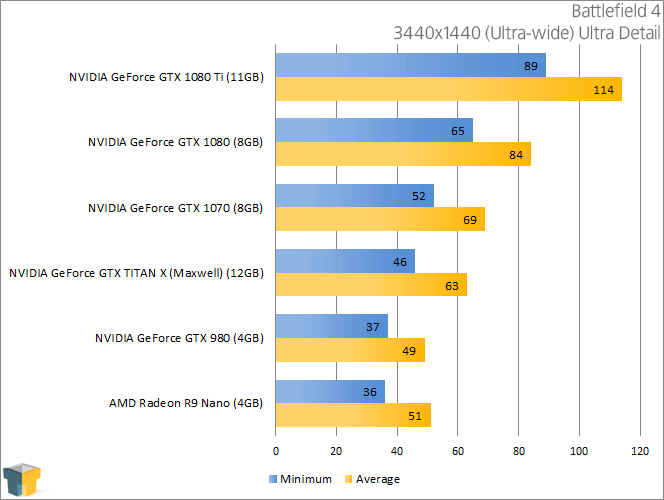
BF4 isn’t as demanding as the new BF1 (which will be part of our GPU test suite overhaul, due next month), but the GTX 1080 Ti becomes the first graphics card to power it at 4K, at max detail, and breach 60 FPS. As the GTX 1080 was tested a while ago, I’m sure driver updates could push that card even closer to the 60 FPS mark, but the Ti simply blows right on past that landmark, keeping close to 60 FPS at the minimum.
It is important to note, though, that online play is likely to introduce many more variables and graphically demanding situations, so this performance isn’t representative of that. It should take very little effort to attain 60 FPS at 4K on this GPU even still, with anti-aliasing being a great first choice to whittle down, as well as ambient occlusion, effects, and post-process.
For ultrawide, the GTX 1080 Ti can eat this game for breakfast. That’s still a hip term, right?
Crysis 3
Like Battlefield 4, Crysis 3 is getting a little up there in years. Fortunately, though, that doesn’t matter, because the game is still more intensive than most current titles. Even though the game came out in 2013, if you’re able to equip Very High settings at your resolution of choice, you’re in a great spot.
Testing: The game’s Red Star Rising level is chosen for benchmarking here, with the lowest difficulty level chosen (dying during a benchmarking run is a little infuriating!) The level starts us out in a broken-down building and leads us down to a river, where we need to activate an alien device. Once this is done, the player is run back underneath a nearby roof, at which point the benchmark ends.
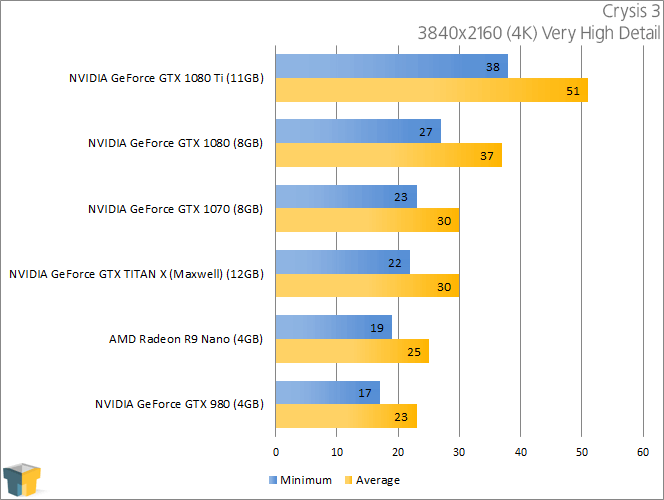
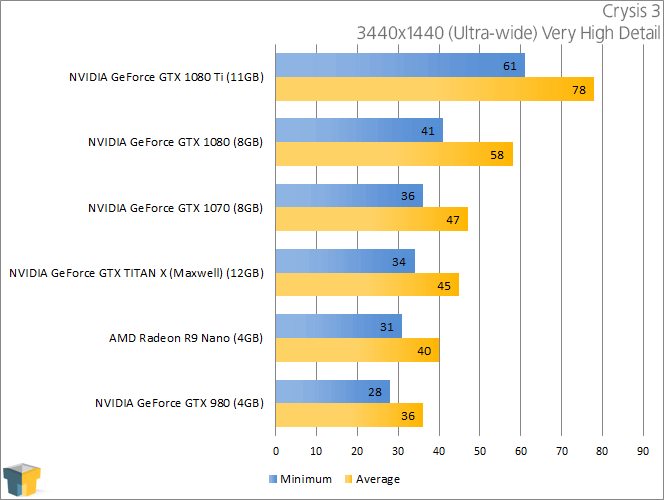
While the GTX 1080 Ti exceeded 60 FPS at 4K in Battlefield 4, Crysis 3 proved a wee bit too demanding. Still, 51 FPS is admirable, for a game as demanding as this one. Not long after this game came out, I tested it at 4K / Very High, and it was downright painful. Today, the GTX 1080 Ti handles those settings without issue. 51 FPS is no 60 FPS, but it’s still what I’d consider “great”.
On the ultrawide side, the GTX 1080 can handle this game no problem. The Ti simply smooths things over even more, exceeding 60 FPS on the minimum.
DOOM
DOOM 3 was released a couple of months before Techgage launched (March 1, 2005, for the record), and it was a game featured in our GPU testing right from the get-go. For this reason, this latest DOOM feels a bit special, even though it follows DOOM 3 up eleven years later. As we hoped, the game proves to be more than suitable for GPU benchmarking.
Testing: Our test location starts us off at the bottom of a short set of stairs early on in the game, where we must climb them, open up a door, and then go to a big room where demons are taken care of and the benchmark is stopped.
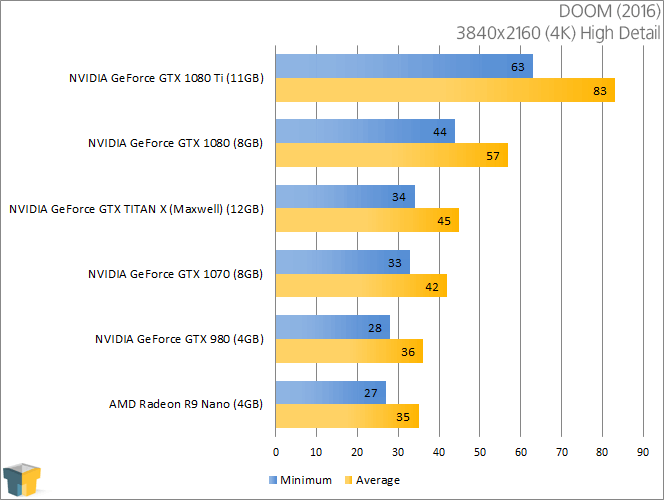
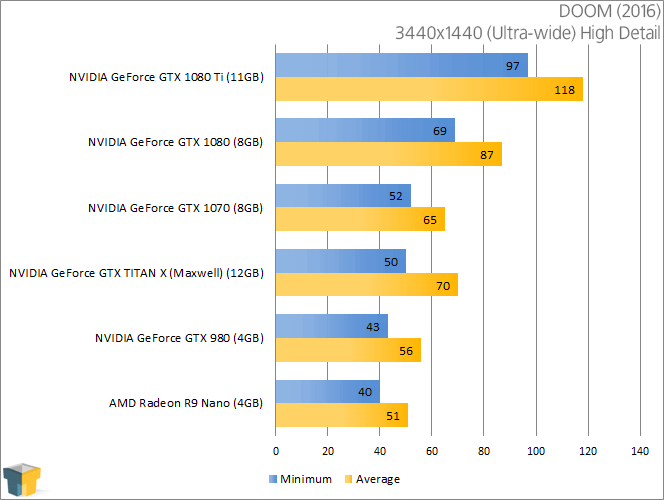
These results are quite impressive. I wish I was able to afford time before this review was published to test the GTX 1080 in DOOM again, as I feel like NVIDIA made some major strides in its driver since the GTX 1080 launch for certain titles. However, DOOM isn’t the only title that exhibits large gains, as you’ll see over the next few pages.
I should note that DOOM was tested at High, rather than Very High, so that higher profile will bring the FPS down a bit, but it seems safe to say that the 1080 Ti is the ultimate GPU for DOOM at either 4K or 3440×1440.
Grand Theft Auto V
Does a game like this even need an introduction? Any Grand Theft Auto game on the PC is a ‘console port’, proven by the fact that it always comes to the PC long after the consoles, but Rockstar has at least done PC gamers a favor here by offering them an almost overwhelming number of graphical options to fine-tune, helping to make it suitable for benchmarking, especially at high resolutions.
Testing: The mission Repossession is chosen for testing here, with the benchmark starting as soon as our character makes his way to an unsuspecting car. The benchmark ends after a not-so-leisurely drive to a parking garage, right before a cutscene kicks in.
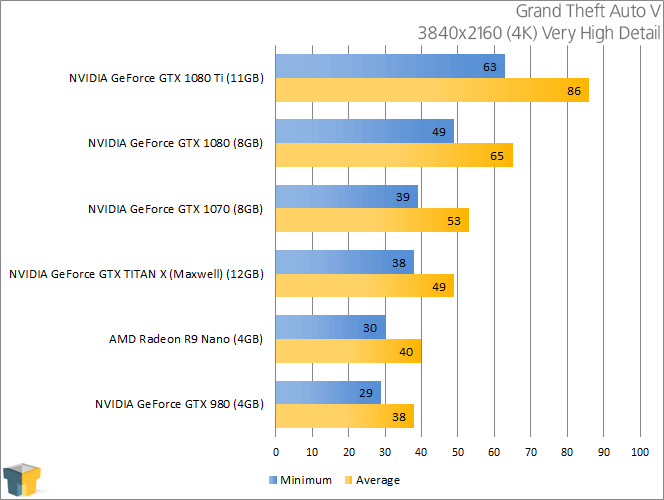
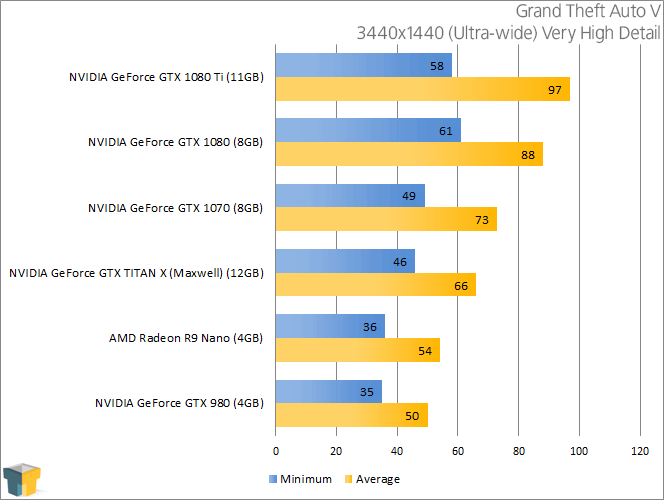
Let’s face it: GTA V isn’t the most demanding game, but it’s still a hard test on our graphics cards at these resolutions. Given that, the GTX 1080 Ti is overkill for this game, with even the GTX 1070 performing admirably. At 3440×1440, the GTX 1070 even breaks fast 60 FPS.
Support our efforts! With ad revenue at an all-time low for written websites, we're relying more than ever on reader support to help us continue putting so much effort into this type of content. You can support us by becoming a Patron, or by using our Amazon shopping affiliate links listed through our articles. Thanks for your support!




